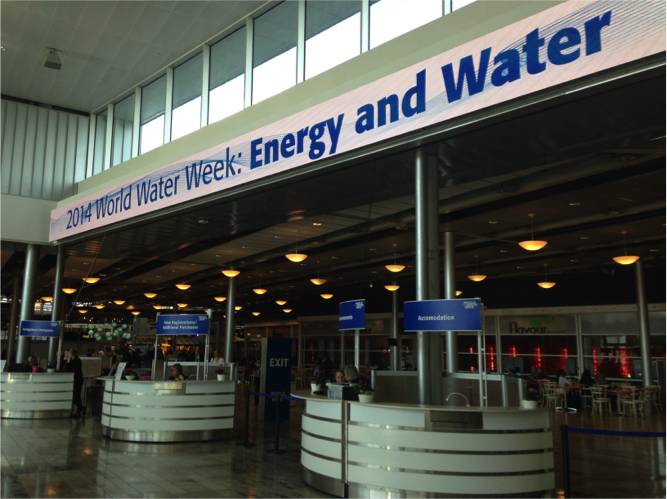Code Green Solutions


Over 3,000 water and energy experts, students, advocates, and enthusiasts gathered in Stockholm, Sweden last month as delegates to the annual World Water Week conference. Sponsored by the Stockholm International Water Institute in partnership with the International Union for Conservation of Nature, Sustainable Energy for All, and the World Bank Group, the conference brought together many of the foremost experts on water issues from around the globe.
This year’s topic centered on water and energy and their inextricable link to one another and to other resources. Previous themes of the conference have included Water and Cooperation (2013), Water and Food Security (2012), and Water in an Urbanising World (2011). Next year’s theme will be Water and Sustainable Development, highlighting the importance of water in the post-2015 Sustainable Development Goals (SDGs).
The broad themes of this year’s conference included many societal challenges and opportunities with respect to water and energy, with an emphasis on crosscutting issues, such as food security. The influence of the two resources on food supplies was perhaps one of the most persistent topics of the week, and often included discussion of how water will be considered in the post-2015 development agenda. When considering potential solutions, speakers first stressed the need to eradicate the “silo mentalities” of the water, energy, and food sectors. There was also extensive discussion about the importance of distinguishing between the need for local provisional solutions versus sweeping national policies. One of the most important solution-oriented goals for the week was to determine how to bridge the gap between science and policy – no simple task in today’s politicized world.
One key session for the sustainable buildings community was Water, Energy, and Urban Development. This full-day workshop explored the myriad solutions that have been developed around the globe for integrating water and energy systems in cities to maximize efficiency and functionality.
Two particularly interesting strategies from Germany included the Hamburg Water Cycle and the City of the Future Initiative in Morgenstadt. The former relies on a separation of wastewater sources (stormwater, graywater, and blackwater) in order to minimize waste while maximizing opportunity for energy recapture and water recycling. The Morgenstadt study, conducted by the German research organization Fraunhofer, incorporates successful integrated water and energy solutions from cities around the world to customize a plan for Morgenstadt’s development.
In Sydney, Australia, a city that has been significantly affected by water scarcity, the implementation of stormwater harvesting and onsite water recycling and treatment systems provided flexibility and substantial financial savings to several building projects. The session concluded with a tour of Hammarby Sjöstad, a new urban district in Stockholm that combines water, energy, and waste systems to maximize resource savings. These strategies offer strong ideas for new solutions even if they are unlikely to be suitable for broad application across the globe.
The closing plenary of the conference concluded the week on a very hopeful note (see video here and full conference program here). The keynote speakers provided an outlook on the future of water in the world and touched upon how water will influence the SDGs and the 2015 climate agreement in Paris. Their final message was one of urgency, reminding us that water and energy are the most critical resources on this planet, and their complex relationship affects all sectors and all countries.
Understanding this nexus between water and energy, as well as the efficiency with which we must handle both resources, should be one of the foremost goals of the sustainability community in coming years.